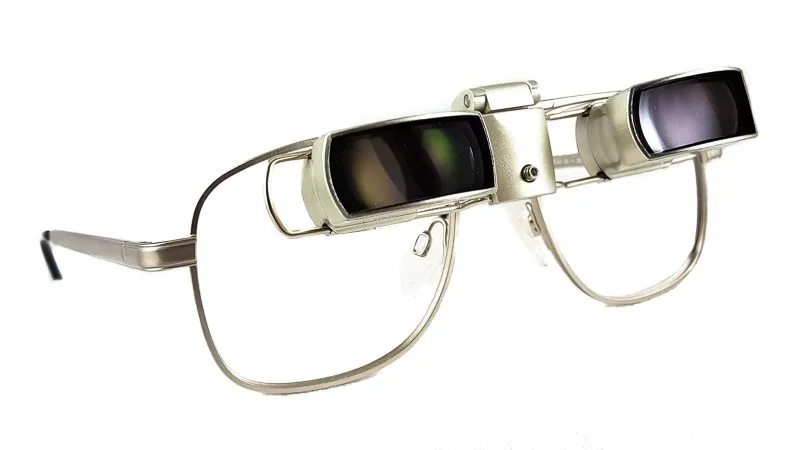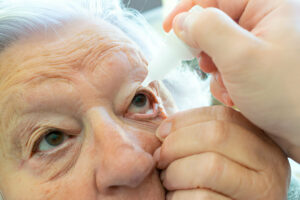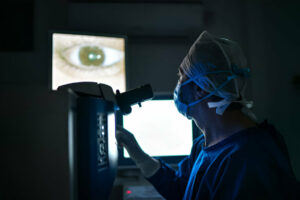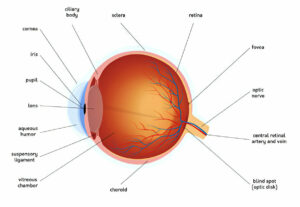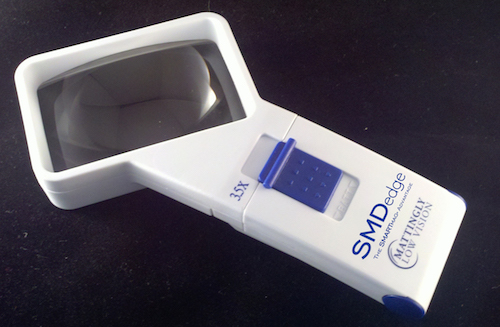Eyes are among the most delicate parts of human bodies, requiring special care and attention in order to remain healthy. Eye twitching is one of the many conditions that may afflict our eyes; it could be indicative of neuromuscular disorders like Bell’s Palsy, Cervical Dystonia, Multiple Sclerosis Dystonia Tourette Syndrome or Benign essential blepharospasm according to Healthline.
Myokymia
Myokymia refers to any muscle spasm in one or more eyelid muscles. Although common and typically unconcerned about, myokymia should be monitored closely as some cases can last weeks or even months and need medical evaluation.
Eyelid twitch can be very annoying, particularly if it persists over time and does not go away. A persistent twitch in one or both eyelids may also interfere with vision, leading them to blink more frequently resulting in dry eyes and irritation; some individuals have taken recourse to over-the-counter lubricants as an attempt at relief.
Myokymia affects different people differently and may range in severity from mild to moderate and even severe. Twitch can affect both upper and lower eyelids and one or both sides. Twitching usually feels like a small spasm or tickle which persists over time but sometimes feels hard, even to the point of plucking the eyelid. Some individuals also experience hard spasms that close their eyelid for long periods, known as blepharospasm.
Myokymia can have various causes, such as overwork, fatigue, lack of sleep, stress, caffeine consumption (too much or too little), certain medications or alcohol consumption and magnesium deficiency. It may also be an indicator of neurological disease such as multiple sclerosis or traumatic brain injury; in such cases it’s important to visit a physician immediately for evaluation and treatment.
Myokymia also comes in its rarest form – Superior Oblique Myokymia (SOMy), a condition believed to be caused by vascular compression of the trochlear nerve. This disorder can be debilitating and frustrating, leading to vertical and torsional microtremors in eye, monocular oscillopsia, and tremerous sensations; patients have reported relief with mirtazapine (Remeron).
Benign essential blepharospasm
Blepharospasm, or essential blepharospasm, is an intermittent movement disorder (dystonia) affecting the muscles surrounding the eyes. Although not harmful, its cause is believed to be malfunctioning neurons in an area of the brain known as the basal ganglia. Women are three times more likely than men to experience this disorder which usually starts between their fifth and sixth decade of life – though symptoms usually do not manifest severely but spasms may become debilitating over time.
Myokymia is one of the earliest symptoms of blepharospasm and often occurs as eyelid twitching. These episodes can be exacerbated by bright light, fatigue or stress and last anywhere from seconds to several minutes; for some patients these episodes progress into forceful spasms of their brow and mouth that last more than several minutes – however this occurrence tends to be intermittent; though reading, driving, watching TV etc can all trigger it as can medications such as antidepressants, antipsychotics and anticholinergics which may further aggravate these episodes further.
One or more medications have proven useful in alleviating blepharospasm’s severity, such as muscle relaxants like clonazepam, diazepam and haloperidol; anticholinergic acetylcholinesterase inhibitors carbachol and benztropine may also provide some relief; yet by far the most successful method for treating this disease is Botulinum Toxin Injection into affected eye muscles – commonly referred to as Botox (Botulinum Toxin), known by brand names BOTOX (Botulinum Toxin Injection or Botulinum Toxin or Botulinum Toxin; abbreviated as BOTOX, incobotulinumtoxin A or abobotulinumtoxin A), is currently the go-to agent used by doctors for this disease treatment.
People suffering from spasms may assume their spasms are simply bad habits or caused by being stressed or tired, yet it is vitally important to seek medical assistance as these symptoms can severely disrupt daily life and even cause blindness. Sleep is key and avoid situations which exacerbate symptoms as well as practicing behavioral techniques like relaxing exercises and concentration to reduce the frequency and intensity of spasms; additionally avoiding certain foods/supplements can also prove useful in combatting them.
Neuromuscular disorders
Neuromuscular disorders refer to conditions which affect muscles and the neuromuscular junction. These conditions may manifest themselves through symptoms like twitching, weakness, pain and spasms as well as breathing problems – though their exact manifestations vary depending on which disorder has taken hold.
Neuromuscular disorders can impact anyone, regardless of age. Some symptoms can be mild while others more serious; the majority are caused either through inheritance or new mutations to DNA.
Neuromuscular disorders vary in terms of their causes and the areas affected, with different disorders often having different symptoms that vary depending on what kind of disorder or condition is being experienced. While some conditions such as cerebral palsy affect muscles across both the face and body, symptoms include left eyelid twitching – known as hemifacial spasm – more frequently when tired, stressed, or eating.
Doctors can identify neuromuscular disorders through physical examination and taking a history. A blood test may also be necessary in order to detect certain conditions that cause muscle weakness or twitching, including diabetes mellitus, thyroid disease and renal failure; while urinalysis will help determine any infections such as pyelonephritis that could contribute to muscle weakness or twitching.
Muscle weakness and eye twitching can be indicators of an impending stroke. Anyone experiencing these symptoms should seek immediate medical care to avoid complications like brain damage or permanent vision loss. Other signs include difficulty speaking, confusion, double vision or sudden headache.
As muscles contract, electrical signals from the brain travel through nerve fibers to muscles. At the neuromuscular junction, this message is converted to chemical messages at which point acetylcholine is released from nerve endings to attach itself to receptors on muscle fibers and cause them to contract. If neuromuscular disorders arise, however, acetylcholine release becomes disrupted causing additional contraction.
Neuromuscular diseases often present with symptoms that are very similar and cannot be differentiated based on physical examination alone. To ascertain what’s causing muscle weakness or twitching, doctors may perform tests like electromyography and muscle biopsy in order to rule out systemic causes.
Other conditions
Eyelid twitching may be caused by various conditions. Uveitis (an inflammation of the eye) and conjunctivitis are known to trigger it; other signs include other issues with your nervous system or medications used to treat Parkinson’s disease that cause such side effects. Other conditions that can trigger it include shingles, herpes simplex virus, scleroderma and ptosis (a condition which causes the upper eyelids to droop).
Stress and anxiety may also cause eyes to twitch, although it usually does not become severe. Seek medical advice immediately if this symptom arises, using different strategies such as physical activity, getting enough restful sleep and cutting back on caffeine and tobacco consumption – you could even meditate or practice yoga! To combat it further and try different solutions such as these you could try these: exercise, getting enough sleep, getting plenty of physical activity (such as running or cycling), meditation or practicing yoga as means to alleviate it.
Some individuals have found relief using eye drops to alleviate their symptoms of eye twitching by replenishing natural moisture to the eye and helping restore natural oils in its surface layers, which in turn prevent twitching. Other treatments may include gentle eye massages, blinking during screen time or seeing an optometrist to check on how your eyes are doing.
If your eyelid twitching lasts for more than several weeks or is accompanied by other symptoms, seeking medical advice is recommended. A healthcare provider may conduct various tests to ascertain its underlying cause; such tests might include blood work, imaging studies of your brain and nerves as well as more specialized examinations.
If your eye health is becoming an issue, it is best to visit an expert ophthalmologist immediately. An excellent ophthalmologist can help get any twitching under control while improving overall health and vision – find one in your area by searching online.


